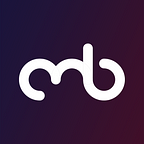How to Help Your Employees Effectively Manage Conflict
By Myers-Briggs Magazine
As a leader, one of your most important jobs is to get the best out of your employees and your teams.
You want your teams to work together as seamlessly as possible, but conflict is bound to disrupt the flow. This is, of course, because people are people, and as such have different opinions, different perspectives and different ways of communicating.
This diversity of thought is good, and often serves as the foundation of innovation. However, it also means that conflict is unavoidable.
To be clear, conflict isn’t inherently always a bad thing. In fact, it’s necessary. An organization in which there is no disagreement (if such an organization actually exists), is doubtless one in which groupthink abounds, and which necessary contrary opinions are not explored. Nevertheless, because of human nature, conflicts usually aren’t managed in productive ways. As such, they can be highly disruptive.
And it can be expensive. According to research, employees spend an average of two to three hours a week dealing with conflict. It takes time to resolve, sometimes it even costs you your best employees. It also adds more stress to the job, which can reduce productivity, among other negative effects.
Minimizing the negative impact of conflict
But with a little training conflict can be handled in productive ways, and the costs of conflict between your people can be minimized.
Why? Because everyone has a particular way they deal with conflict. Actually, everyone has one or two of five ways to deal with conflict. In 1974 psychologists Ken Thomas and Ralph Kilmann introduced a psychological model that has since become the premier basis for understanding and managing conflict in workplace settings. According to the model’s underpinning theory, each of us has certain ways that we tend to approach conflict.
Check out this video on Thomas and Kilmann’s approach to conflict
More on these approaches to conflict in just a moment…but the main practical takeaway is that our default approach to conflict may or may not be the best one for the situation at hand.
The way you naturally handle conflict may not always the best way
For example, you may naturally tend to try to win each conflict at all costs. In some cases, this may be necessary, particularly if there is a crisis that requires decisive action. But in most cases, it’s going to simply create friction, gain enemies, and may even result in very poor decisions if you’re not taking other opinions into account.
On the other extreme, you may default to always accommodating what other people want. This may avoid friction, and in certain cases may be necessary (such as when it’s just not important enough to be worth the fight, or an extremely important relationship is at stake). But it also means that your voice isn’t being heard. Aside from this not being good for your career, it also may lead to poor decisions, as your insight isn’t being taken into account.
Thomas and Kilmann’s theory, however, holds that even though we naturally gravitate toward a singular approach to conflict, we have the ability to choose other approaches, based on their appropriateness to the situation.
By training employees to know themselves better and identify their default approach to conflict, and also identify alternative approaches, you can reduce conflict between people. This in turn reduces conflict between teams, which ultimately reduces conflict across the whole organization.
This can save you a lot of time and a lot of money, and consequently a lot of headaches.
So how can you train your employees to better manage conflict? You can start by choosing the right tool for the job — a tool that gives employees insight into themselves and to others, and can be used inside and outside of the workplace. Fortunately, Thomas and Kilmann wrapped their groundbreaking theory and model into a psychometrically validated instrument that can be used for a wide range of use cases.
Leveraging the TKI instrument to better manage conflict
The Thomas Kilmann Conflict Mode Instrument (TKI®) is the world’s best-selling conflict management tool. It provides insight into an individual’s typical response to conflict situations using one or more of five conflict handling modes:
- Competing
- Accommodating
- Avoiding
- Collaborating
- Compromising
It does so by identifying a person’s conflict resolution style and then helping them understand how and when to use each of the styles — not just the one they’re most comfortable with. The TKI assessment helps people reframe and defuse conflict for more productive outcomes and happier, more productive people.
The best part is that it’s easy to use and takes about 20 minutes to complete, and it doesn’t require any certifications. As it has been used extensively for quite some time, naturally its practitioners have a lot to say about it. Here’s just a sample of what managers and HR professionals are saying about the TKI tool:
“We would recommend the TKI tool because it’s easy to use. People attending our conflict training see how it applies on the job almost immediately.” — Anna Hanna, Director of Talent Management and Organizational Development, Buckeye Pipe Line Company
“I’d recommend the Thomas Killman conflict mode instrument because it’s simple intuitive and provides instant and often insightful feedback into conflict styles as well as the impact of one’s own conflict style and others.” — Patrick Dailey, HR Consultant, Celanese Corporation
“Developing effective conflict management as a core competency can be accomplished easily with the Thomas Killman conflict mode instrument and can generate an immediate and measurable return on investment.” — Dr. Randall Wade, Business Technology Chair, Rogue Community College
